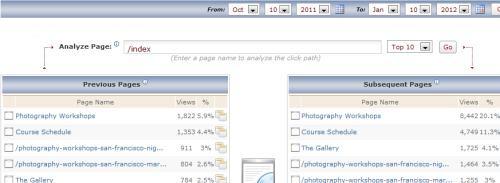In his book Outliers, Malcom Gladwell stipulated that the most talented “boy-wonders” were successful not because of innate talent, but because they invested 10,000 hours of rigorous practice in their chosen profession. Hours dedicated towards the mastery of their craft.
In the 1990’s, psychologist K. Anders Ericsson and a few colleagues at Berlin’s elite Academy of Music conducted a study where they divided the school’s violinists into three groups. The first group consisted of the stars – the students deemed with the potential to become world-class soloists. The second group consisted of those whose skill-level was deemed merely average or “good.” And the third group consisted of those students that were unlikely to ever play professionally but rather perhaps become music teachers in the public school system.
Here’s an excerpt from the book on the results of the study:
All of the violinists were then asked the same question: over the course of your entire career, ever since you first picked up the violin, how many hours have you practiced?
Everyone from all three groups started playing at roughly the same age, around five years old. In those first few years, everyone practiced roughly the same amount, about two or three hours a week. But when the students were around the age of eight, real differences started to emerge. The students who would end up the best in their class began to practice more than everyone else: six hours a week by age nine, eight hours a week by age twelve, sixteen hours a week by age fourteen, and up and up, until by the age of twenty they were practicing — that is, purposefully and single-mindedly playing their instruments with the intent to get better — well over thirty hours a week. In fact, by the age of twenty, the elite performers had each totaled ten thousand hours of practice. By contrast, the merely good students had toaled eight thousand hours, and the future music teachers had totaled just over four thousand hours. – Malcolm Gladwell, Outliers
So essentially, the 10,000 hour rule stipulates that in order for an individual to master something, they must invest 10,000 hours of focused practice in the subject.
So what does this mean for your market and your marketing?
Where Should You Focus Your 10,000 Hours?
Here’s the thing… I’m not sure there’s 10,000 hours worth of stuff to learn about starting a real estate blog (or any small business blog for that matter). There’s:
- Hosting
- Installing WordPress
- Selecting and installing a theme
- Learning how to navigate the WordPress back-end
- Laying out and organizing your content
…and a couple of other miscellaneous items that you learn and get better at along the way.
But what next? Where should you spend your time?
Well, I’ll tell you where you shouldn’t spend your time…
Learn just enough of what you need to know to get started and get your website going, but then, stop chasing every little shiny new object. Stop worrying about what’s hot and what’s new and focus on the following…
Study your website analytics:

At the very least, you should have Google Analytics installed on your website. You should carefully be reviewing your traffic patterns and analyzing the type of content that site visitors appear to be engaging with the most. Daily/weekly practice of this can be very revealing.
Here’s what you should be looking for:
- Where is your traffic coming from? In Google Analytics, you can access this information by logging into your analytics dashboard > clicking on “Audience” >> then “demographics” >> then “location.” They’re real-time beta feature will also give you data on page-views and visitor location.
- What pages are people visiting the most? For example, if I access my analytics in Visistat, I can access a section titled “global click path” and report that the majority of my site traffic clicks on my “About” page and “Best Of” page after accessing a post on the site. What about you? What subsequent pages are site visitors accessing the most after landing on a post or page of your site? Is it your IDX search page? Your community pages? Once you figure that out, ask yourself, what can I do to maximize the performance/conversion on this page?
- Search queries people are typing to get to your website? If you’re using Google Webmaster Tools you can check to see what search queries people are typing and see what pages/posts of your website rank well for that keyword or phrase. An understanding of this can really give you some insight into the areas you need to improve to capture more site traffic.
Anything else I’ve missed?
Recommended reading: The 2012 Guide to Google Webmaster Tools — Analytics Integration, +1 Metrics, and More.
Study how users navigate your website:

You need to develop a better understanding of the behavior of your site visitors. Why are they coming to your website? What’s causing them to stay longer, or what’s causing them to leave quickly? What’s influencing their click-behavior?
Ask yourself these questions:
- Who are my site visitors? Buyers/Sellers/Investors?
- What are they’re goals? What are they trying to do? What are they trying to access?
- What are my goals for my site visitors? What do I want them to do once they land on a post or page? Where do I want them to click next?
Your site might have multiple audiences (and that’s ok), so your answers will vary for each. But say you work with first-time home buyers. That means that first-time home buyers are coming to your website to search homes for sale so they need to be able to easily and quickly access your IDX search page.
So you’re answers might look something like this…
Who are my site visitors?
- First-time home buyers.
What are they’re goals?
- Search homes for sale, find upcoming open houses. (the Diverse Solutions IDX is perfect for this – for a limited time, you can access a 10-day free trial here. Disclosure: I work for Diverse Solutions).
- Learn more about the buying process (understanding key terms like “escrow” and other financing information).
What are my goals for these site visitors?
- I want them to register on my IDX search.
- I want them to contact me (via a form submission) regarding specific properties that are for sale.
- I want them to download my free book – “The Ultimate Guide for First-Time Home Buyer’s.”
The point of this is, once you’ve identified your target audience (your visitors), your visitors goals, and what you want them to do once they’re on your website, you can really start to tighten things up and improve your navigation and conversion funnels. In other words, your website should allow site visitors to easily accomplish their goals – it’s better for them, and it means more leads for you.
Study & Write for Your Customer (Not for Your Industry):

Stay focused. Remember, people are coming to your website because they’re looking for local and relevant community info. Things like:
- How the local market is doing.
- What’s the average sales price?
- What’s the averages days-on-market?
- What are the best neighborhoods to live in?
- What are some of the best schools in the area?
Focus less on what the industry is doing and what your peers are writing and talking about. Focus instead on studying and writing for your customer. They are what drives your business forward.
Learn what they’re passions and interests are. What are they interested in learning more about? What kind of information are they looking for that your content can provide answers too? The better you understand your customer, the easier it’s going to become to serve up content that they’re interested in reading. The more you serve up that type of content, the more they’ll keep coming back to your site.
Putting Your Hours In…
The 10,000 hour rule says that in order for an individual to master any skill, he/she must put in 10,000 hours of focused practice. The operative word being “focused.”
Spend less time focusing on what’s shiny and what’s new…
…on how to get more Twitter followers.
…or how to get more “Fans” on Facebook.
Focus instead on doing the research and analyzing the stats that matter. The research that will help you fine tune your marketing to drive more business.
What are you waiting for?
Like this post? Subscribe to the RSS feed or via email today!





